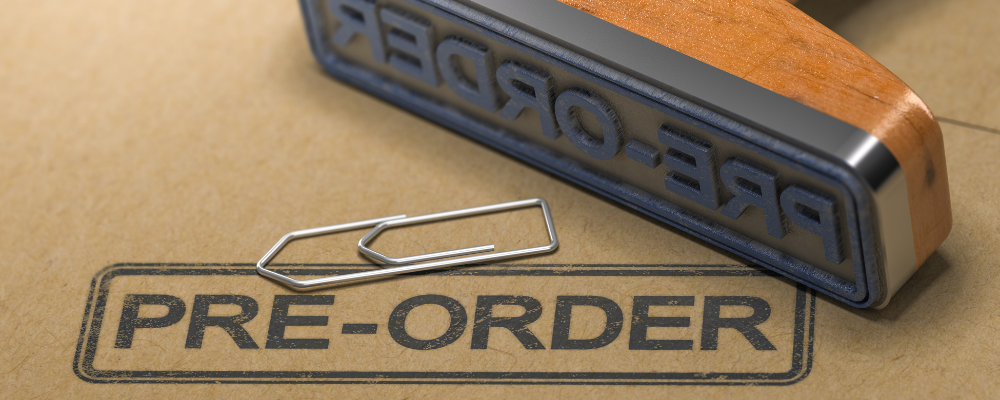Codelist Issue 66 for ONIX 3.0 has been released.* Complete listings of the ONIX codelists can be downloaded from the EDItEUR website.
Issue 66 stand-alone codelist documentation as a readable PDF or HTML file (open and read it in your web browser)
Issue 66 TXT, CSV, XML, JSON files for loading into your data management applications
Issue 66 XSD, RNG, DTD schema modules for use with existing XML schema files (but note that it's better to download the latest 3.1 schemas since they incorporate a couple of small improvements as well as the new Block 8)
The ‘strict’ XSD 1.1 with Issue 66 (the strict XSD must be updated each time there is a new issue of the codelists, as it includes some codelists within the XSD itself)
The online browser for the ONIX code lists at ns.editeur.org/onix has been updated to issue 66
Need help finding and using the documentation? Read this.
It should go without saying that everyone should review the document summarizing the changes and update their systems, but we've highlighted some changes of particular note for you below. This is a weighty list and we encourage you to read the whole document, not just the following highlights.
List 17 – Contributor role
Code B34 for “Sensitivity reader / editor” is added, reflecting a reader or editor responsible for ensuring the text is free of offensive, potentially offensive or insensitive language; is inclusive and free from bias; and avoids stereotypical characterization.
List 79 – Product form feature type
To comply with the EU Deforestation Regulations (EUDR), some parties in the supply chain need to collect and manage detailed information about the provenance of the raw materials used to manufacture a physical product. Publishers and others selling books in, importing into, or exporting from the EU will be required to provide this data to the EU for wood- and paper-based products from Dec 30, 2024. Small- and micro-enterprises (as defined by the regulations) have an extra six months to comply, and products using wood harvested prior to June 29, 2023 are instead subject to the older EU Timber Regulations.
Data about the provenance of the raw materials needs to be passed from paper and board manufacturers to printers, publishers, and distributors (who may be responsible for import into or export from the EU), then (potentially) to resellers, to ensure that due diligence concerning the provenance can be applied throughout the supply chain. A ‘Due Diligence Statement’ (DDS) will need to be uploaded to an EU documentation portal, and the references from that portal, and in some cases also the provenance data itself, will need to be passed along the supply chain so that supply chain partners who carry out their own due diligence may rely on the information being supplied in the ONIX. However, it is not yet clear how far along the supply chain the provenance data will need to be passed — DDS document references are likely to be required by all resellers, whereas detailed provenance data may be necessary only for larger reseller organizations.
Four new codes have been added:
| Code | Label | Note |
|---|---|---|
| 50 | EUDR due diligence reference | For EU Deforestation Regulations, |
| 47 | EUDR raw material location (interior or full product) | For EU Deforestation Regulations, location of raw material source plot (‘where the tree grew’) for the interior or main body of the product (or for the entire product, if the raw material source for the binding and other parts of the product cannot be differentiated). If there are multiple sources for the same raw material, repeat |
| 48 | EUDR raw material location (binding) | For endpaper, cover card or board, any other binding or covering material and any jacket (but not including any slipcase or other packaging). |
| 49 | EUDR raw material location (other) | Including any slipcase or box, retail packaging, or supplementary material (but not including any packaging discarded before retail sale). |
Please review the document summarizing the changes for a detailed example showing how the proposed codes in List 79 can be used.
For more information on EUDR and responsibilities under the regulations see:
What Publishers Might Need to Know about the EU Deforestation Regulation
27th Meeting of the Expert Group/Multi-Stakeholder Platform with a Focus on Deforestation and Forest Degradation (PDF download)
List 143 – US CPSIA or other international hazard warning type, List 158 – Resource content type, and List 198 – Product contact role
Product safety emerges as a theme across several lists so we have grouped these together.
Three new codes for List 143, US CPSIA or other international hazard warning type, draw a distinction between a risk and a hazard:
24 Flashing risk unknown: Flashing present but risk unknown or not assessed
25 Sound risk unknown: Sound present but risk unknown or not assessed
26 Motion simulation risk unknown: Motion simulation present but risk unknown or not assessed
And a new code in List 158, Resource content type, code 52 for “warning label”, references a 52 warning label image of any warning label or hazard warning text on product or packaging.
Finally, List 198, Product contact role, allows a data sender to identity a Product safety contact using code 10.
List 175 – Product form detail
Bibliographic vigilance reported by a member of your Canadian National Bibliographic Committee is to thank for the cleanup of codes B400 and B416 alongside the release of code B418:
B400 Self-covered: Covers do not use a distinctive stock, but are the same as the body pages. Use for example with Product form BF, to indicate a pamphlet does not use a card or distinct paper cover. See also B416 (for card covers) and B418 (for distinct paper covers).
B416 Card cover: With card cover (like a typical paperback). As distinct from a self-cover or more elaborate binding. Use for example with Product form BF, to indicate a pamphlet is bound within a card cover. See also B400 (for self-covers) and B418 (for distinct paper covers).
B418 Paper cover: Cover uses a distinct, usually heavier (thicker) paper than the interior pages. Use for example with Product form BF, to indicate a pamphlet is bound within a paper cover. See also B400 (for self-covers) and B416 (for card covers).
Reminder: New lists added with ONIX 3.1 release
As we flagged in a blog post last year, ONIX 3.1 has been released. And with it, two new codelists were introduced which we are highlighting here: List 259 Collection frequency code and List 260 Epublication license date role. These are included on page five in the document summarizing the changes.
*A note to ONIX 2.1 users
ONIX 2.1 users should note that codelist updates no longer apply to ONIX 2.1 and users should continue to use Issue 36. ONIX 3.0 code lists and schema modules no longer contain codes or lists unique to ONIX 2.1. You can still obtain the correct ONIX 2.1 schema and codelists from the Archived Previous Releases page.
BookNet Canada still recommends that you use and periodically update your copy of EDItEUR's best practices guide. It’s an essential ONIX 3.0 guide, but much of the information in it applies equally to ONIX 2.1.














Recommendations on Barcode Price Extensions.